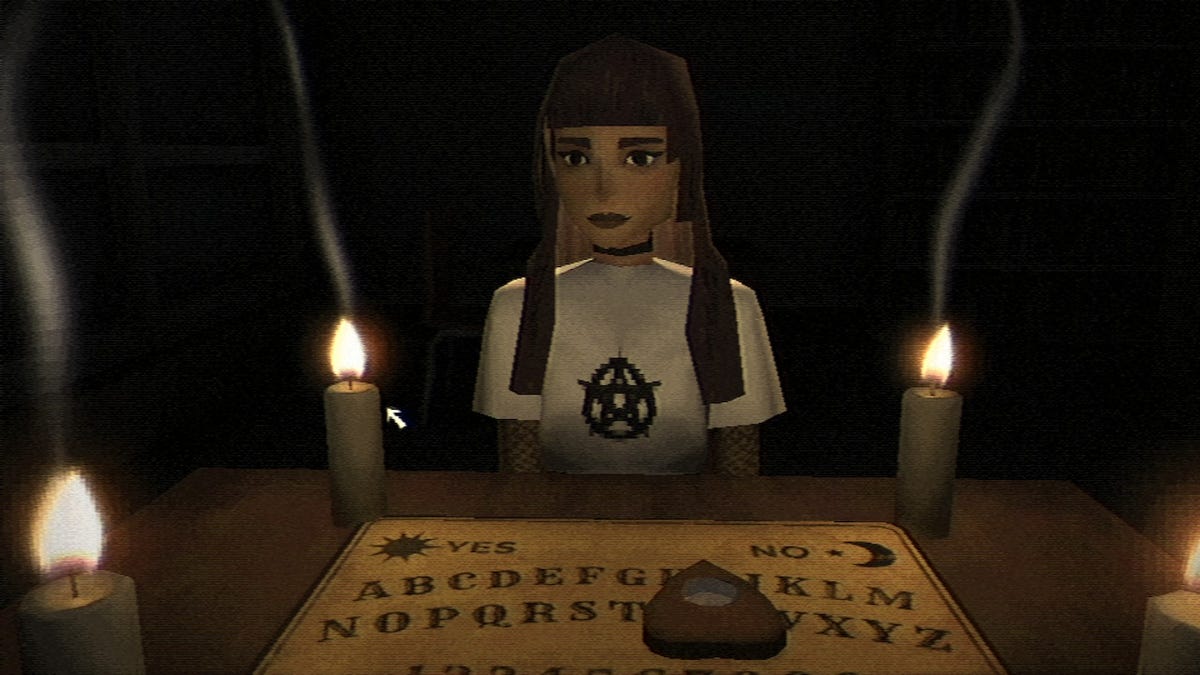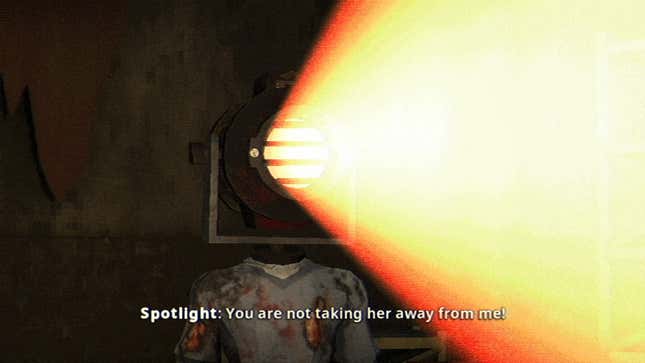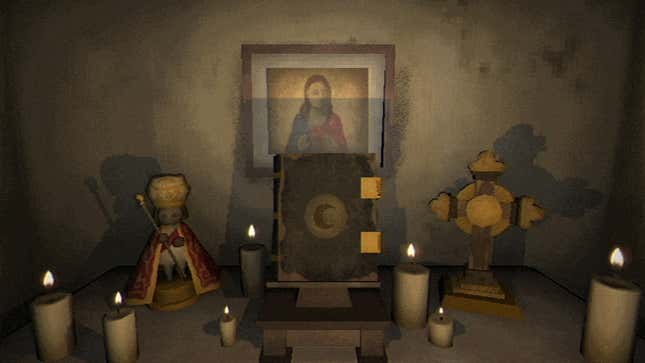Tech
Blumhouse Games’ First Release Is A Low-Poly High School Nightmare

People do a lot of things for love, and that list widens when you’re in high school. You may tape about 1,000 magazine photoshoots of One Direction to your bedroom wall, as I did dutifully, or you may invoke several agitated spirits with a ouija board, like Vivian, the protagonist of Fear the Spotlight. The short third-person horror game is the first to be released by horror movie producer Blumhouse’s new game publisher, though it’s much more sensitive than the often vicious films — Megan, The Purge, Dashcam — Blumhouse is associated with. Instead, husband-and-wife developer Cozy Game Pals offers a fragile, lo-fi horror experience that is just as freaky as it is sugary sweet.
Responsible nerd Vivian, with her cloudy glasses, has a big crush on her school’s resident goth girl, Amy. When I start playing Fear the Spotlight as Vivian, all I carry in my Silent Hill-style inventory is a rosy envelope containing a letter I want to give Amy to confess my feelings. But in the top right corner of my inventory, I see Vivian’s pink lungs, too, which blink with either green, yellow, or red light depending on her health state. Vivian has asthma, so unless I pick up one of the many inhalers hidden throughout the game, I need to be careful with her heart.
First, I just need to get through the night. Wanting to impress Amy, who has teenage witch tendencies, Vivian organized a school library exhibit on the occult and included a weathered ouija board in the display. Tonight, Amy wants to use it, so I help her light a few candles and put my hands on the planchette. Almost immediately, the lights go out, Amy goes missing, and I prepare to wander a twisted version of my high school in order to find her.
It’s the exact same story—with the same puzzles and resolution—that Fear the Spotlight had in 2023, when Cozy Game Pals initially released it. People who have already completed the game a year ago may not want to play through its (perfectly paced) two-hour-long campaign again, though Fear the Spotlight’s Blumhouse edition also offers console ports, additional language translations, and new story content players can access after finishing the base game once.
Anyway, Fear the Spotlight’s horror is the kind that slowly pools — like blood around a scraped knee — so there’s still value in revisiting the game and allowing its more distressing aspects to gradually tear you open. Like its low-poly graphics, which give the game the same muddy quality as a lost teddy bear, left out in the rain. Admittedly, these PS1 graphics make Amy and Vivian look like extras from The Lego Movie, but they also enhance Fear the Spotlight’s surreal environmental details, which include flayed love birds and burnt roses.
Though it’s more romantic than the games that inspire it, Fear the Spotlight clearly pays homage to 90s and 2000s horror, and I especially see elements of Silent Hill and the high school survival horror game ObsCure in it. Like the former, Fear the Spotlight is stocked with cryptic poems and puzzles — including one that requires you tap bloody piano keys in the right order, like you had to do in Konami’s 1999 game. Like the latter, Fear the Spotlight turns its scholastic setting into the hell some kids and Carrie think it is. Shortly after Amy disappears, the library Vivian was sitting in turns as black and crumbly as an Oreo when fire breaks out and pushes her through a crack in the wall. There was a fatal fire at the school decades ago, too, though the one I experience as Vivian seems more supernatural. Before it started, I noticed dark figures with white eyes staring at me from between the bookshelves.
Once I emerge from the wall and see that the school is now dirty, empty, and outfitted with pay phones, I’m more sure of it: I’ve been transported into the past, and pieces of spiral notebook paper with scribbled notes from students offer insight into why I’m here. It seems like the historic fire wasn’t an accident, and Amy, with her psychic connection to the spirit world, could be a victim of it, too.
In reaching her, I’m forced to avoid an eerie recurring enemy: a man, seemingly, with a bloodied shirt and a spotlight for a head. As he wanders down hallways and around rooms hissing that he knows I’m in there, the orange beam of his skull searches for me and burns my whole body if it finds me. “Fear the Spotlight,” you know.

Inhalers, like I mentioned, cure Vivian of damage, but since she’s unequipped for combat — she was prepared for confessing her feelings, not taking on the Underworld like Orpheus — I deal with the spotlight enemy by running and hiding under things like desks. I get in a comfortable habit with this, though avoiding the spotlight is sometimes impossible and often makes me yelp with frustration. If only a millimeter of unlucky Vivian’s body sticks out from between lockers or debris, the spotlight zaps her entire body in a way that feels unintentional, not scary. To make Fear the Spotlight’s occasionally unfair enemy encounters even more tiresome, the game’s final battle totally does away with the sneaky self-preservation I’m forced to use throughout the game. It instead requires I assume an offensive position in an awkwardly telegraphed fight, and I couldn’t wait for it to be over so that I could go back to appreciating Fear the Spotlight’s much more compelling interpersonal drama.
After the credits roll, though, I enjoy Fear the Spotlight’s bonus content, which allows me to play the same story from Amy’s perspective. Since Amy spends nearly all of Fear the Spotlight’s base game in psychic purgatory, her perspective is interesting and conceptual.
After she vanishes from the ouija board table, she feels as if she is locked away in a dilapidated version of her childhood home, which is shuttered and guarded by puzzles — I must find the painting of Jesus to place on the candlelit table, use the hammer I found to rip plywood off of a door frame, etc.
Through it all, I receive eerie voice recordings of Vivian on my phone, which suggest someone has been listening to us get closer to one another for a long time. Sometimes, I get to peek through my locked front door’s peephole and see what Vivian’s enduring to find me, which only makes me more eager to get out. It doesn’t help that I’m being stalked by my childhood fear — a giant, soaking wet demoness from a movie I saw. When my stealthing inevitably fails and she tries ripping my guts out with her hand, I have to sniff the incense sticks I pick up around the house to ease my mind and restore my health.

But, for Amy, it’s worth getting impaled by mythical creatures to reunite with Vivian, much like Vivian is willing to get zapped by a hundred demonic spotlights in order to find Amy. This devotion, even more than Fear the Spotlight’s fantastic, hallucinatory setting, is what kept me with my face stuck to my Switch screen.
That’s unusual for me. I mostly play horror games for the scares, to distract myself from what I believe is the horror of my life — my anxiety disorder and a new round of insomnia, which can keep me up for days. On the most terrible occasions, I get too exhausted to do anything other than cry with the lights out. But Fear the Spotlight offers me solace over escapism. It tells me that love is everywhere, especially in the dark.
.








